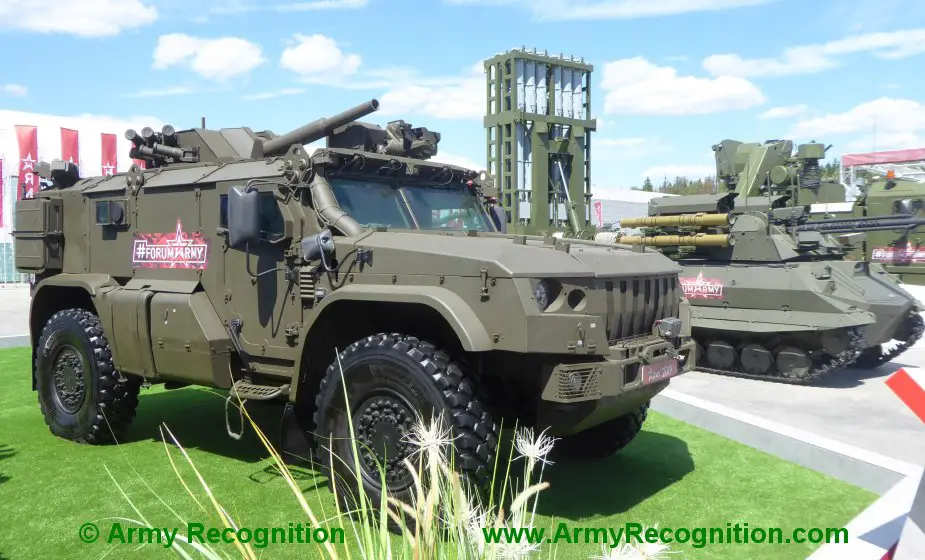Breaking news
Russian Airborne Forces to get antitank weapons on Typhoon-VDV.
Airmobile units of the Russian Airborne Forces will receive antitank missiles systems on Taifun-VDV (Typhoon) chassis. They can fire missiles to 10 km. The antitank weapon will complete trials shortly. It is a 4-wheel-drive armored vehicle with Kornet-M antitank missiles. It is designed for airmobile units of a new concept.

Remdiesel K4386 Taifun-VDV (Picture source: Army Recognition)
In late 2019, the design bureau in Tula ordered acceptance trials of Kornet-EM on 4x4 Typhoon-K chassis. The list of munitions was obtained by the newspaper and comprised several Kornet missiles, including long-range ones. They can hit targets at a distance of 10 kilometers.
The trials will also engage the latest missile with a fragmentation warhead and a bigger range. It has not yet been accepted into service. The list of munitions promotes antitank fight and fire support provision. The new system has a double firing range compared to the current airborne one on BTR-D chassis.
Remdiesel producer of Typhoon-VDV said the trials of the armored vehicle are nearing completion. The first batch deliveries are to begin in 2020. The design of airdropping means for the new wheeled vehicle is ongoing. However, the main deployment method is the delivery to frontline airfields.
The airlifted long-range antitank weapons will increase the autonomy and survivability of airborne units, expert Vladimir Anokhin said. "Air assault and paratrooper units operate away from the main forces and have to rely on themselves. Long-range weapons will help destroy dangerous targets without requesting air or artillery support," he said.
Highly mobile, well-armed hardware capable of long marches by ordinary roads is necessary to develop airborne forces into full-fledged expeditionary troops. Typhoon-VDV was designed to carry various payloads. The basic option carries a machinegun and an automatic grenade launcher. There is a possibility to install a remotely controlled combat module with an automatic gun and machinegun. Besides the antitank option, other specialized vehicles on the undercarriage are being designed. They include SA-25 Verba MANPADS and 82mm mobile mortar.
The vehicle hull protects against armor-piercing 7.62mm bullets. It protects the crew up to an explosion of 6kg TNT under a wheel or 4kg under the hull.
The vehicle on trials is armed with upgraded Kornet-EM 9K128M-1 systems and can destroy various targets on the battlefield. Besides antitank cumulative missiles, it comprises high-explosive and thermobaric munitions.
The complex can destroy low-speed air targets: trials at Ashuluk range confirmed the ability of Kornet to hit helicopters and small reconnaissance and combat drones. A tracking device and a new technical vision system assist the operator in the mission. They simplify detection and tracking. It remains only to press the button.
In contrast to most traditional antitank weapons, Kornet control is wireless. The missiles are guided by a laser beam which improves reliability and jam-resistance. It helps attack armor and non-contrast targets, such as buildings, fortifications and firing points, the Izvestia said.
© Copyright 2020 TASS / Army Recognition Group SPRL. All rights reserved. This material may not be published, broadcast, rewritten or redistributed.


























